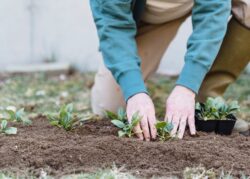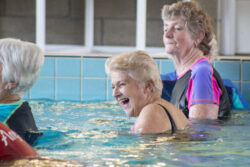Embracing exercise later in life
If you’ve reached your golden years without embracing a regular exercise routine, you might think that it won’t make a difference to how you feel now. Some other common perceptions about older individuals and exercise include:
- Older people are frail and physically weak.
- Exercising is dangerous and could lead to injury.
- Only exertive and sustained exercise is of any use.
We challenge these perceptions and explore why embracing an active lifestyle in your senior years is, not only possible, but it can be life-changing.
The power of exercise later in life
According to Better Health, half of the physical decline associated with ageing may be due to a lack of physical activity. Without regular exercise, people over the age of 50 years can experience health problems such as reduced coordination and balance, increased susceptibility to mood disorders, reduced respiratory function, muscle mass and strength.
No matter your age, regular exercise can improve your sleep, concentration, mental and physical health. Even a small increase in activity can lead to benefits.
“Research shows us that exercise keeps us mobile, functional and independent for longer, and can prevent us from falling as we age. I’ve seen many older clients report feeling better in their body and mind since moving to a more active lifestyle,” says Maggie Hollows, Anglicare Southern Queensland Physiotherapist

Exercise can:
- Maintain or increase muscle mass and bone density, reducing the risk of falls and fractures.
- Lower blood pressure, improve cardiovascular health and reduce risk of heart disease.
- Enhanced lung and respiratory health.
- Maintain flexibility in the joints, making daily activities easier and reducing the risk of injury.
- Reduce stress and anxiety.
- Lead to a sharper mind. Exercise has been linked to better cognitive function, including memory and problem-solving skills.
- Provide opportunities for social interactions, combating feelings of isolation.

Physio, Maggie’s tips for embracing exercise later in life
Start slowly:
“If you’re new to exercise, or haven’t been active for a while, begin with low-impact activities like walking, swimming, or chair exercises. Start with 10 minutes and gradually build it up from there.
Find your passion:
“Choose activities you enjoy, and you won’t look back! Think dancing, gardening, or maybe tai chi. If you can exercise with friends or join a local exercise group, this is even better, as regular connection with others is important for our health.”
Consistency is key:
“Schedule in your exercise like you would any other important appointment.”
Safety first:
Before beginning any new exercise program, consult your healthcare professional to ensure it’s safe and appropriate for your health. If something doesn’t feel right, seek advice. It’s important to listen to how your body responds to certain exercises.
“Make sure to stay hydrated and eat well, especially as we move into the hotter months.”
“The activity needs to be done at a moderate intensity. This means you should be able to talk but not sing while doing the activity.”

Get the most out of your new-found routine:
Incorporate balance and flexibility exercises into your routine to reduce the risk of falls and improve mobility and strengthening exercises two or more days per week.
It’s never too late to start your fitness journey and embrace exercise later in life.
“Many would be surprised at how much of a difference small amount of activity can make. Once it becomes a habit, you’ll crave the feel-good hormones that are released when you exercise.”
For more information about our activity recommendations for older Australians, see:
- Choose health, be active – a physical activity guide for older Australians
- Australia’s physical activity and sedentary behaviour guidelines – tips and ideas for older Australians.
You can also find information about Anglicare’s Health Focused Support here









